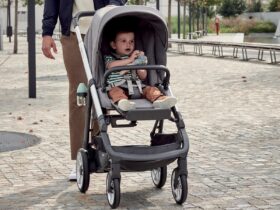Parenting Solutions
Welcome to “Parenting Solutions: Tackling Toddler Toe-Walking.” You’re not alone if you’ve noticed your child frequently walking on their tiptoes. In this concise guide, we’ll explore the common occurrence of toe walking in children, its potential impact on development, and practical strategies for parents to address this behavior. Discover insights into causes, diagnosis, and effective treatments, empowering you to engage in your child’s healthy development actively. Let’s take the first step together toward understanding and managing toddler toe-walking.

2. Understanding Toe Walking
Overview of Toe Walking Behavior:
Toe walking is a natural stage in a child’s development, often observed during the initial phases of learning to walk. Many children go through this phase as they explore and refine their coordination skills. However, when toe walking persists beyond this stage and becomes a consistent behavior, it may raise concerns about potential developmental issues.

Normal Development vs. Potential Concerns: Parenting Solutions
While occasional toe walking is typical. Parenting Solutions Continuous and sustained toe walking can affect a child’s dynamic balance and stability. Prolonged toe walking may lead to the shortening of the Achilles tendons, posing challenges in maintaining a proper gait pattern. Understanding the difference between normal developmental toe walking and persistent toe walking is crucial for parents to address potential concerns.
Connection to Coordination Skills and Dynamic Balance:
Toe walking is intricately linked to a child’s overall coordination and balance development. As children progress in their motor skills, they transition from toe walking to using their entire foot for stability and balance. Exploring this connection helps parents recognize the significance of addressing toe-walking behaviors early on to ensure proper motor skill development.
In this section, we’ve laid the foundation for comprehending toe walking in children. The following sections will delve into the various causes, potential problems, and effective strategies for diagnosis and evaluation. Parenting Solutions Stay with us as we navigate the key aspects of understanding and addressing toddler toe-walking for a holistic approach to your child’s well-being.

3. Identifying Toe Walking Causes
Differentiating Idiopathic and Secondary Causes:
Understanding the root causes of toe walking is crucial for effective intervention. Idiopathic toe walking refers to cases where there is no underlying medical condition, and it often resolves with time. On the other hand, secondary toe walking may be linked to neurological, musculoskeletal, or sensory issues. Distinguishing between these causes is essential for tailored and targeted treatments.
Exploring Potential Problems:
Several factors can contribute to persistent toe walking. Addressing these potential problems is key to developing an effective intervention plan. These factors include issues with Achilles/calves, sensory processing, and instability. Identifying the specific challenges your child faces provides a roadmap for targeted solutions.
- Achilles/Calves Issues: Tightness or weakness in the Achilles tendons can contribute to toe walking. Understanding the role of these tendons in proper gait and balance is crucial for effective treatment. See all
- Sensory Processing: Some children toe walk due to sensory processing issues. Sensory interventions can play a pivotal role in addressing this aspect, ensuring a more comprehensive approach to treatment.
- Instability: Weakness or instability in the muscles and joints can lead to toe walking. Pinpointing areas of instability helps tailor exercises and interventions to enhance overall stability.

Next Steps: Diagnosis and Evaluation:
With a clearer understanding of potential causes, the next section will delve into the diagnostic process Learn how healthcare professionals identify and assess toe-walking behaviors, paving the way for a targeted and effective treatment plan. Stay tuned for insights into recognizing symptoms and conducting necessary tests to guide your child’s journey toward healthier walking habits.

4. Diagnosis and Evaluation
How Toe Walking is Diagnosed:
Identifying the root cause of toe walking begins with a thorough diagnosis. Pediatricians and healthcare professionals employ several methods to assess and diagnose this behavior in children. Observation of walking patterns, evaluating the range of motion in the ankles, and assessing muscle strength are fundamental components of the diagnostic process.

Recognizing Symptoms and Conducting Necessary Tests:
Understanding the symptoms associated with toe walking is crucial for an accurate diagnosis. Healthcare providers look for signs such as persistent tiptoeing, tight Achilles tendons, and potential underlying sensory issues. Additionally, diagnostic tests, including imaging studies and neurological examinations, may be conducted to rule out any structural or neurological abnormalities contributing to toe walking.
Insight into When Toe Walking is Most Noticeable:
Gaining insight into when toe walking is most prevalent offers valuable information for diagnosis. Whether barefoot, with specific shoes, when fatigued, or overstimulated, understanding the circumstances surrounding toe walking provides essential clues for healthcare professionals. Recognizing patterns aids in tailoring interventions to address specific triggers.
As we unravel the diagnostic aspects of toe walking, the subsequent sections will delve into effective treatment strategies. Learn how to address your child’s unique needs based on a comprehensive evaluation. Join us in the exploration of treatments, from non-surgical approaches to orthotic options, providing a roadmap for proactive parental involvement in managing toddler toe-walking behaviors.

5. Treatment Strategies
Non-Surgical Approaches:
Addressing toe walking often involves non-surgical interventions tailored to the child’s specific needs.
- Physical Therapy: A key component in treating toe walking, physical therapy focuses on strengthening muscles, improving range of motion, and enhancing overall motor skills. Therapists work closely with children to correct gait patterns and promote proper foot placement.
- Stretching Exercises: Regular stretching exercises play a crucial role in maintaining tendon lengths. These exercises, recommended by healthcare professionals, help prevent the shortening of the Achilles tendons, promoting a more natural walking pattern.
- Sensory Input: For cases linked to sensory processing issues, incorporating sensory interventions is essential. These interventions aim to improve sensory integration, addressing the underlying causes of toe walking.

Orthotic Options:
Orthotic devices provide additional support and alignment, aiding in the correction of toe-walking behaviors.
- AFO Braces (Ankle-Foot Orthoses): These braces offer support to the ankle and foot, promoting proper alignment and preventing toe walking. They are often recommended for children with persistent toe walking.
- SMO Braces (Supramalleolar Orthosis): SMO braces provide support just above the ankle and are designed to address specific gait issues. They are particularly useful in cases where AFO braces might be too restrictive.
Surgical Interventions When Necessary:
In rare cases where conservative approaches prove ineffective, surgical interventions may be considered. These interventions aim to address underlying anatomical issues contributing to toe walking, providing a more permanent solution.
Understanding these treatment strategies empowers parents to actively engage in their child’s care. In the following sections, we’ll delve deeper into home strategies, parental involvement, and proactive measures, ensuring a comprehensive approach to tackling toddler toe-walking. Stay with us as we navigate the various aspects of effective and personalized interventions for your child.

Conclusion:
In the journey of “Parenting Solutions: Tackling Toddler Toe-Walking,” we’ve explored the nuances of understanding, identifying, and effectively addressing this common childhood behavior. From unraveling the causes to navigating the diagnostic process and implementing diverse treatment strategies, we have aimed to equip parents with insights and tools for proactive involvement in their child’s well-being. Remember, each child is unique, and there’s no one-size-fits-all solution.
By combining professional guidance with parental intuition, you can empower your child to step confidently into a future free from the challenges of persistent toe-walking. Stay engaged, stay informed, and take those first steps toward fostering your child’s healthy development.
















Leave a Review